How Data Science Will Change the Corrugated Industry
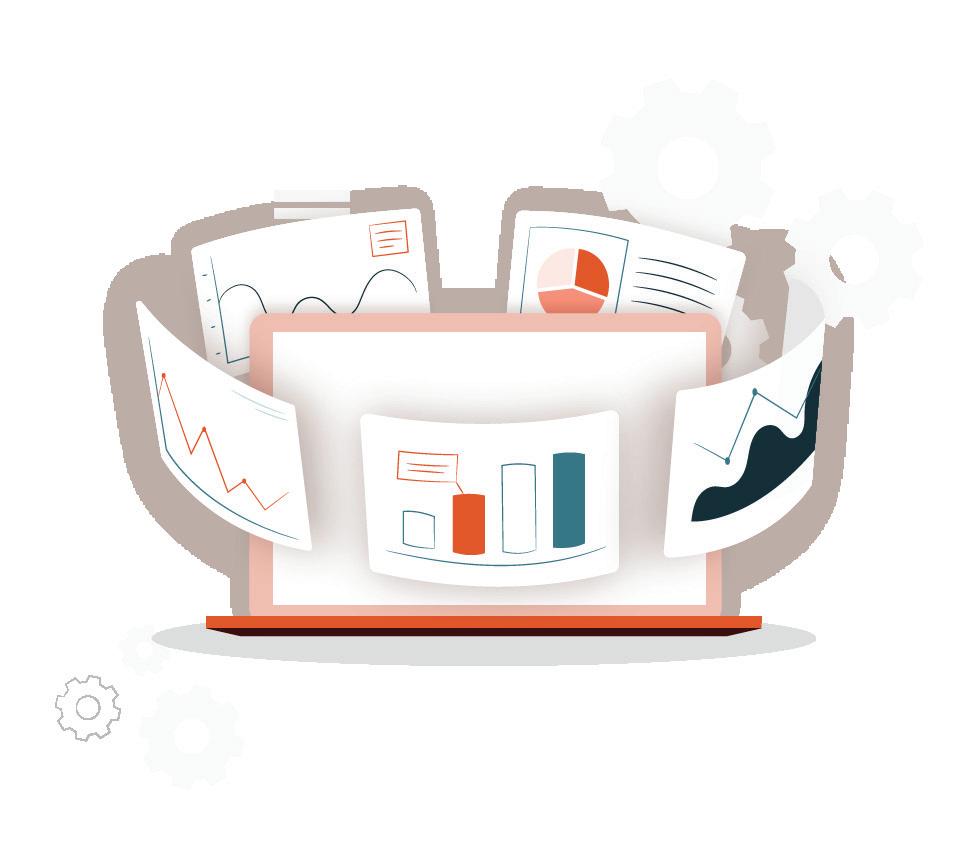
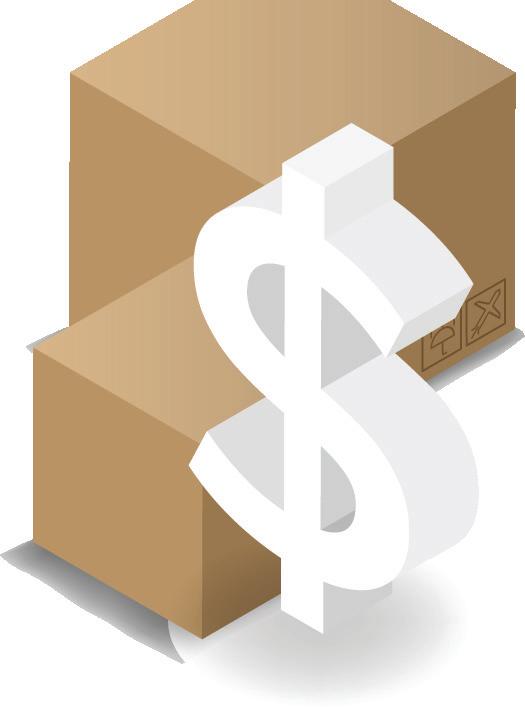

Every minute of every day in a box plant, hundreds of thousands of things happen. The facility is an ecosystem, where every conveyor, every lever, and every moving part has its role. But as in an ecosystem, if some tiny part is not doing its job correctly, a ripple effect that has far-reaching ramifications can occur. Sometimes the impact is insignificant–perhaps a marginally slower output because the tread is wearing thin on a rubber wheel. Other times, the impact is much more significant–a breakdown of a machine that brings output to a grinding halt or interrupts multiple stages of the manufacturing line.
Regardless of the scale of the impact, the signs that can indicate or even anticipate these types of issues are very hard to detect. Even the most well-trained and experienced operators and plant managers are unable to see and detect these small anomalies that can indicate a small or large scale problem. In the nearly 150 years since corrugated box manufacturing machines came into existence, output, efficiency, and bottom line has ridden largely on manual analysis and intuition.
In the corrugated facility of the future, the one we aim to create, each of the hundreds of thousands of events, behaviors, and actions of every part of every machine is no longer considered to be simply an event that happens during one moment in time. Rather, each of these events generates a data point. Whether directly through the computer or machine that is controlling the process, or by the sensors that are or can be affixed to countless components throughout the facility, data is being generated, and collected. This data just is waiting to be harvested and analyzed.
Without even realizing it, machine operators and facility managers are sitting on an information gold mine that can revolutionize the way they conduct
business. These insights can increase their output and profit margins by orders of magnitude, and even predict and prevent breakdowns before they happen. They can provide owners and managers intelligence that can inform hiring, ordering of parts and raw materials, and maintenance scheduling. But the key to turning the endless stream of data into actionable intelligence lies within a discipline that is relatively new in terms of application to the corrugated industry: the data science approach
1 . How Data Science Will Change the Corrugated Industry
Data Mining 101
In order to understand the impact of data science, it is necessary to understand its basis: data alone is completely meaningless. Without optimizing the way the data is collected, figuring out how to process it, and finding a formula to understand it and turn it into intelligence, the data is just a bunch of useless numbers. In a manufacturing operation, the organization might be data rich but still information poor.
Data mining itself comes from focusing on the discovery process that goes with looking for patterns within voluminous data that is generated nonstop by the facilities. The beauty of data mining, and of data science as a whole, is that it is an interdisciplinary endeavor that taps into theories like statistics, data cleaning, pattern detection and recognition, database theory and technology, and perhaps most ripe for great technological leaps forward: machine learning and artificial intelligence.
The reason why machine learning and artificial intelligence are such an exciting factor within data science is because while a regular computer program is given inputs and told what to do, with machine learning, instead of telling it what to do, it is able to figure out what to do on its own by parsing hundreds if not millions of examples. This means that machine learning and artificial intelligence algorithms are able to find and digest information leading to groundbreaking, previously undetected decisions and conclusions which ultimately have the power to make monumental differences for an organization or an industry.
Perhaps the most culturally mainstream example in recent years is the data revolution within baseball, which has been affectionately nicknamed “Moneyball,” after the Michael Lewis book-turned-film. Data mining and the corresponding actionable intelligence completely changed the way that baseball scouts and general managers valued players and spent their money. Most crucially, those mining and studying data were able to gain a competitive advantage over their less data-rich competitors, meaning that a smaller-budget organization could become rapidly more successful than those with way more assets and resources at their disposal.
What Data Science Means to Corrugated
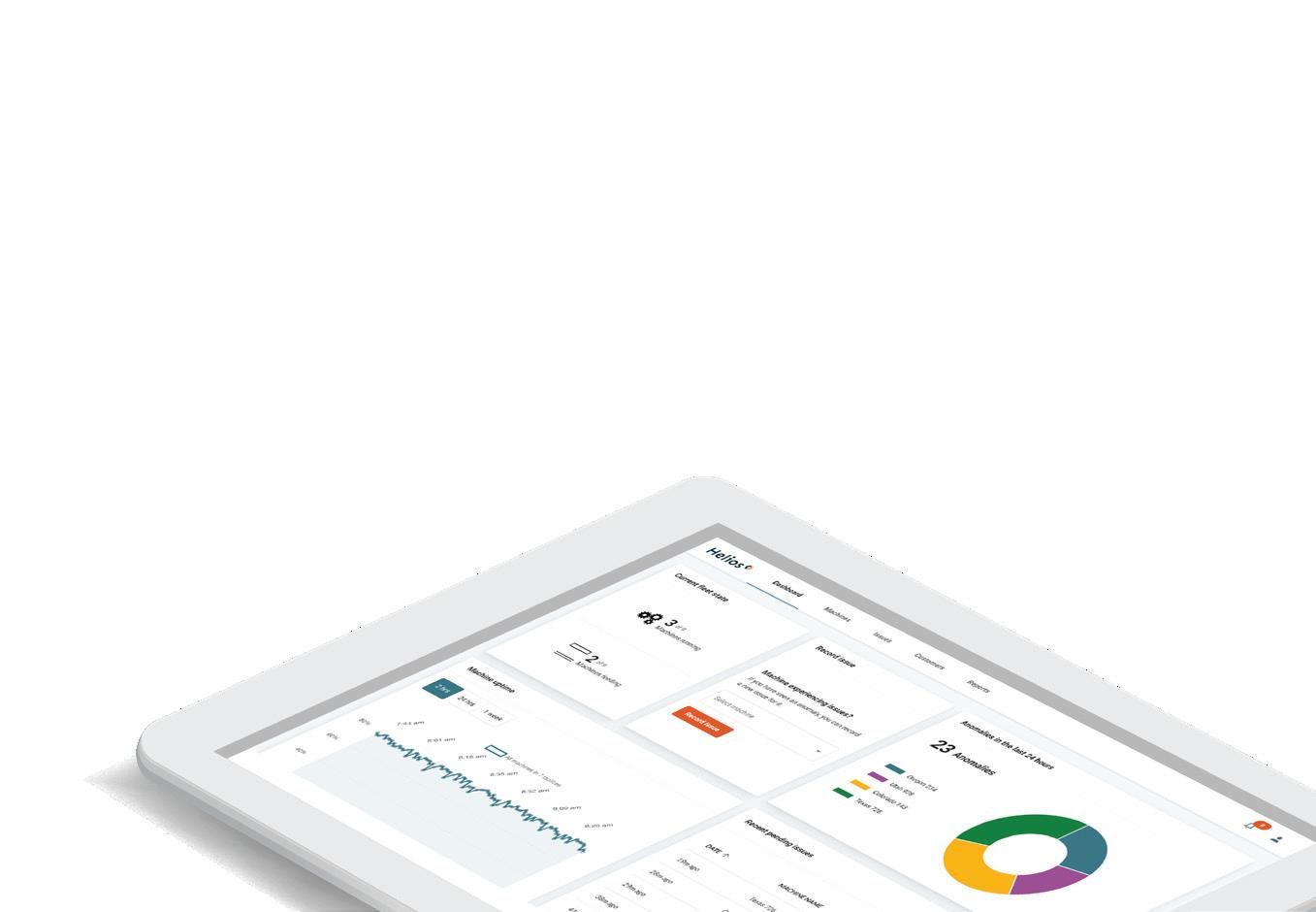
Within the corrugated industry, and with many other manufacturing-based applications of data science, the foundation of the impact lies in what is known as anomaly detection. At its most basic sense, anomalies are behaviors, impacts, or outputs that break from expectation. In other words, it is the ability to notice when something is lagging behind the norm or exceeding and then flagging it as unusual. In a box plant, an anomaly could be anything, such as detecting a slight variation in output rate or efficiency of a machine, a noise or vibration outside of the ordinary, a misfire or error, or any of nearly infinite other events. Even if ever-soslight to the point of being imperceptible to the human eye, these can be the keys to intelligence; because generally anomalies suggest that something out of the ordinary is taking place, and this might be an indication of an impending issue.
The challenge, of course,
2 . How Data Science Will Change the Corrugated Industry
Helios, an OEM-agnostic corrugated data analytics platform, is sitting right at the cross-section of data science and corrugated expertise.
Helios and the Corrugated Data Revolution
Being able to detect anomalies is only the tip of the iceberg when it comes to turning ugly, random, unrefined data into actionable intelligence that can massively impact bottom lines and change the game for corrugated manufacturing facilities.
Helios, an OEM-agnostic corrugated data analytics platform, is sitting right at the cross-section of data science and corrugated expertise. It is poised to become even more insightful and influential as more facilities adopt the technology, and in turn, as the data scientists behind the scenes have more information to analyze.
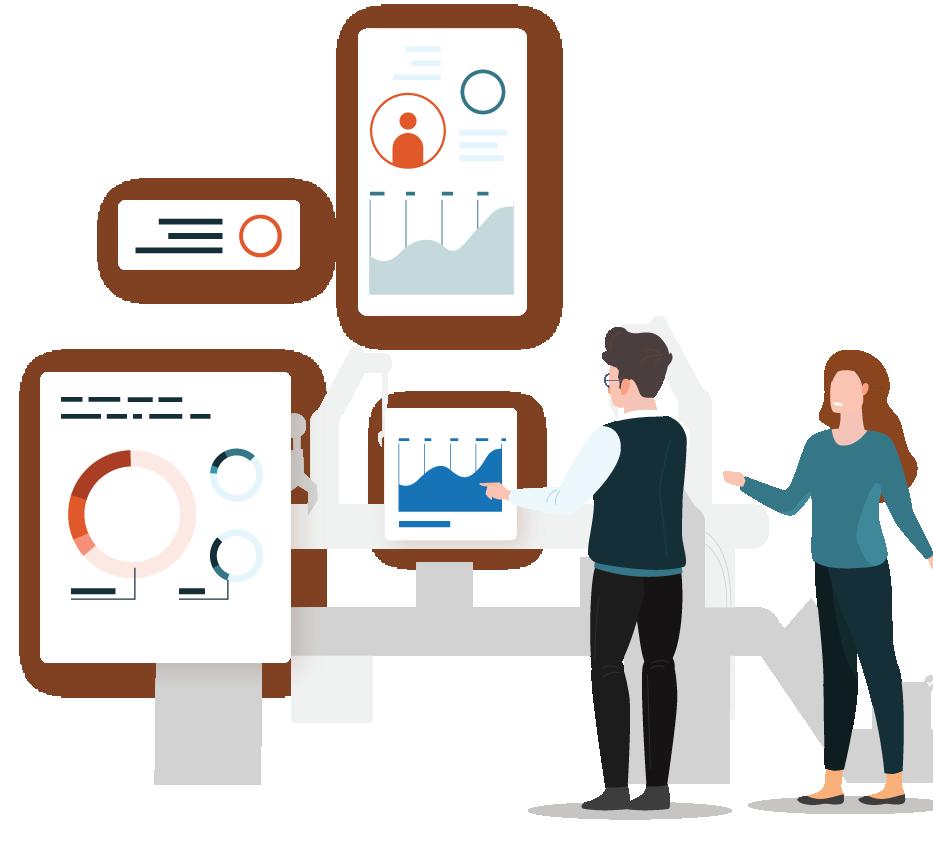
Helios works through a system of gateways, that “talk” directly to the machines Programmable Logic Controllers (PLC’s), and collect data that they transmit to the cloud for further analysis. Streaming this sensor data to the cloud allows it to be run through machine learning algorithms and saved for future use and training. But the Helios platform allows these insights to be surfaced in real time on the front end for the purposes of observation, monitoring, anomaly detection, and even anomaly prediction. The sensor values that each PLC is reading are innumerable, but as it makes its way to the cloud, it is all being processed by the underlying Helios algorithms through anomalydetection pipelines. The current version is univariate timepoint, and window-based, but there are going to be more robust multivariate anomaly detection capabilities rolled out within the next year.
The Helios platform does not need to already know what it is looking for, and it doesn’t need to be constantly monitored. It simply has the capability to indicate to operators or key personnel if an anomaly is detected so that they can take the necessary action to fix it before something goes wrong on a large scale. In these early stages, users of the corrugated equipment go into the program and label the data with regards to what it actually meant to the health of the operation. This information then allows artificial intelligence to map anomalies and label the data in a way that can be more predictive and proactive in the future, as opposed to merely reactive and observational.
The Benefits of Helios to Corrugated
3 . How Data Science Will Change the Corrugated Industry
Predictive Maintenance Live Monitoring Retrospective Analysis
Facilities
The more the system observes over time, the more information it will need to have labeled, making specific note of negative events, such as unplanned downtime or major malfunctions. The Helios dashboard gets smarter over time as this additional information is input.
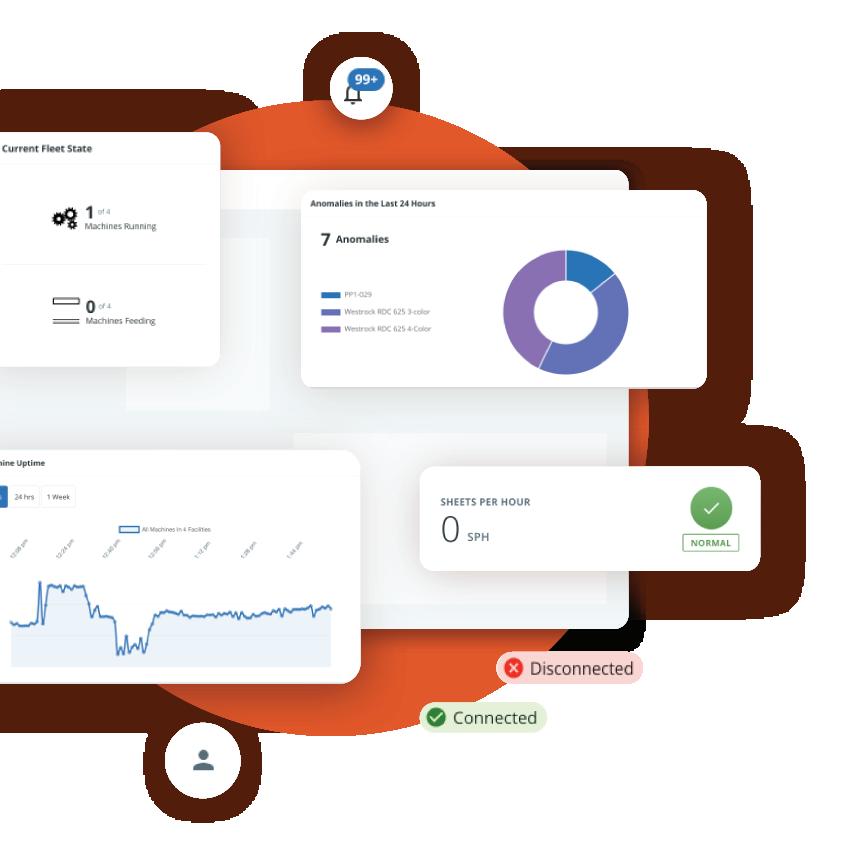
The Benefits of Helios to Corrugated Facilities
Helios is platform agnostic and can be implemented across devices. But the actual machine learning happens for each individual machine or device. In other words, it is not using pre-specified, generic models of anomalies, but rather, the Helios data analysis team trains the algorithm to specifically mine data and learn from every client’s specific, unique machines. This refined, bespoke, tailored solution has immense potential benefits to organizations adopting it.
Predictive Maintenance
Helios intelligence will be able to output maintenance predictions. They can provide information like how the maintenance intervals change or slide out or in, depending on how many sheets are being produced per week, how long or fast the machines are
information, it is possible to compute maintenance expenses and intervals based on actual use, as opposed to manufacturers’ recommendations.
This can be likened to a car, where the manufacturer may make a blanket statement that a timing belt must be changed at 80,000 miles, as opposed to basing this off of the actual performance and condition of the timing belt in each specific car. With the insightful information provided by Helios, it is possible to confidently extend the lifespan of parts beyond based on its actual wear, which can mean massive savings on expensive maintenance that could have waited. On the other side, it can also notice if maintenance is needed before the recommended schedule, which can prevent catastrophic failure and unpredicted maintenance downtime and associated expenses.
Live Monitoring
Helios is able to provide real-time insight about what is being flagged as anomalous. This means that operators are able to see a true picture of what is going on with their machines, including if something that is occurring might be problematic, and allow troubleshooting to take place in real time. On a higher level, it can also provide professionals further away from daily operations, such as a multi-site or regional manager, to look across a set of machines and get real averages and data about uptime and production. On a secondary basis, this creates legacy information, which allows expertise to be passed on to new or different operators as facilities grow and expand or as supervisors retire and replacements are promoted in their place.
Retrospective Analysis
The Helios dashboard also allows for number crunching and performance analysis looking back over time or at specific events. This means that information about performance at a specific day or time, or during a certain season or circumstance, can be called up and evaluated for future insight. This makes for a more in-depth look at what was actually taking place. More importantly, this information was not readily available in the past, and it required a human being present to observe and document performance analytics in real time – or miss out on them forever.
The Future of Data Science in Corrugated

The data revolution is not simply a fad that can be waited out. It is here to stay and changing the game in innumerable sectors around the globe: consumer behavior, health tracking, sports, education, and operations large and small.
Waiting for the data craze to pass is like pretending that the internet is unnecessary or superfluous. This type of robust analysis is only going to get more sophisticated, essential, and engrained as time passes. Companies of all sorts are embracing technology such as Helios because, without it, so much critical insight is being left on the table.
Even industries that are not typically considered as tech-heavy industries, like corrugated, are seeing an unavoidable change. This will no longer be seen as a cutting edge technology, but rather as a necessity. Its strategic incorporation into operations will allow box plants to gain a fast and long-term competitive advantage over companies that delay adoption.

The data revolution is changing the game in innumerable sectors around the globe. The data revolution is here to stay. www.gohelios.us sales@gohelios.us 1-800-598-HELIOS Scan here to schedule your personalized demo of Helios today.








